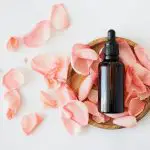Do you often find yourself wondering how long it takes for E6000 glue to dry? Look no further! Whether you’re using it for crafting, DIY projects, or repairing items, knowing the drying time of E6000 glue is crucial for the success of your project.
Several factors can affect the drying time of E6000 glue, such as temperature, humidity, and the type of surface you’re applying it to. It’s essential to understand these factors to ensure that you’re giving your glue enough time to dry and cure properly.
In this article, we’ll explore the recommended drying time for E6000 glue, as well as tips and tricks to speed up the process. Additionally, we’ll discuss precautions you should take when using this type of glue and how to store it properly.
Table of Contents
Understanding the Factors That Affect Drying Time
You’ll want to pay attention to a few factors that can affect how long E6000 glue takes to dry.
The first factor to consider is the temperature. The warmer the temperature, the faster the glue will dry. If you’re working in a cool environment, you may need to wait longer for the glue to dry. It’s important to note that the glue may still feel tacky even after it has dried, so it’s best to wait a full 24 hours before handling your project.
Another factor to consider is the humidity level. High humidity can slow down the drying process, so if you’re working in a humid environment, you may need to wait longer for the glue to dry. You can try using a dehumidifier or placing a fan nearby to help speed up the process. It’s also important to make sure that your workspace is well-ventilated to prevent any fumes from building up.
The type of surface you’re gluing also plays a role in how long the glue will take to dry. Non-porous surfaces, such as metal or glass, may take longer to dry compared to porous surfaces, like fabric or wood. If you’re working with a non-porous surface, you may need to apply more glue and wait longer for it to dry.
It’s important to follow the manufacturer’s instructions and allow enough time for the glue to fully dry before handling your project.
Recommended Drying Time
Once applied, E6000 glue needs some time to set and cure properly before you can handle the item. The recommended drying time for E6000 glue is 24 to 72 hours, but the actual drying time may vary depending on factors such as temperature, humidity, and the amount of glue applied.
To ensure the glue dries properly, it’s important to follow the manufacturer’s instructions and allow the glue to dry for the recommended time. If you handle the item too soon, the glue may not have fully cured and could result in the item falling apart or the glue not holding properly. It’s better to be patient and wait for the recommended drying time to prevent any mishaps.
In some cases, you may need to use a drying aid such as a fan or a dehumidifier to speed up the drying time. However, be careful not to use too much heat as this can cause the glue to dry too quickly and become brittle.
With proper application and drying time, E6000 glue can provide a strong and durable bond that will last for years.
Tips and Tricks to Speed Up Drying Time
If you’re in a rush to finish your project, try using a fan or dehumidifier to help speed up the curing process of your E6000 adhesive. The optimal temperature for E6000 glue to dry is around 70°F, so make sure the room you’re working in is at that temperature or higher. You can also try placing the project near a heat source like a heater or a lamp to help speed up the process.
Here are three tips and tricks you can use to speed up the drying time of your E6000 glue:
-
Use a hairdryer on a low heat setting to blow hot air onto the project. The heat will help the adhesive cure faster, but make sure to keep the hairdryer moving to avoid overheating the glue.
-
Mix a small amount of baking soda into the glue before applying it. This will cause a chemical reaction that will speed up the curing process. However, this trick is only recommended for small projects as it can cause the glue to become brittle.
-
Use a two-part epoxy instead of E6000 glue. Epoxy cures much faster than E6000 and is a good alternative if you’re short on time. However, keep in mind that epoxy has a much stronger odor and can be more difficult to work with.
Precautions When Using E6000 Glue
Before using E6000 glue, it’s important to take precautions to ensure your safety. First and foremost, make sure you’re working in a well-ventilated area. The fumes from the glue can be harmful if inhaled for extended periods of time.
Additionally, wearing safety gear such as gloves and goggles can help protect your skin and eyes from any accidental contact with the glue.
Proper Ventilation
Proper ventilation is crucial when using E6000 glue because the fumes can cause harm if inhaled. To ensure that you’re using the glue safely, make sure the area where you’re working is well-ventilated.
Here are some tips to ensure proper ventilation:
- Open windows and doors to allow fresh air to circulate.
- Use a fan to blow the fumes away from you and towards a window or door.
- Wear a mask to prevent inhaling the fumes.
- Avoid using the glue in small, enclosed spaces.
By following these precautions, you can use E6000 glue safely and effectively without risking harm to yourself or those around you. Remember, proper ventilation is a crucial step in using any type of adhesive, and it shouldn’t be overlooked.
Safety Gear
Now that you know the importance of proper ventilation when using e6000 glue, let’s talk about the necessary safety gear. It’s essential to protect yourself from the fumes and chemicals in the glue, even if you’re working in a well-ventilated area.
The first piece of safety gear you should have is a pair of gloves. E6000 glue can be harsh on the skin, so wearing gloves will protect your hands from coming into direct contact with the glue.
Additionally, you should wear safety glasses to avoid any chance of getting glue in your eyes.
Lastly, it’s a good idea to wear a mask or respirator to avoid inhaling the fumes. This is especially important if you’re working with a large amount of glue or in a poorly ventilated area.
By taking these precautions, you can ensure your safety while working with e6000 glue.
How to Store E6000 Glue
To keep your E6000 glue in top condition, you should always store it in a cool, dry place. This means avoiding areas with high humidity and fluctuating temperatures. Ideally, you should store it in a room with a consistent temperature between 50-77°F (10-25°C) and low humidity.
Make sure to keep it away from direct sunlight and sources of heat, such as radiators or ovens. It’s also important to keep the lid tightly sealed when storing E6000 glue. This prevents the glue from drying out and becoming unusable. The best way to ensure a tight seal is to wipe the rim of the container with a clean cloth and then screw the lid on tightly.
If you have trouble opening a tightly sealed container, try using a rubber glove for grip. Lastly, it’s a good idea to keep your E6000 glue in a separate container or drawer, away from other adhesives and chemicals. This prevents cross-contamination and ensures that the glue remains in its original condition.
By following these storage guidelines, you can prolong the life of your E6000 glue and ensure that it remains effective for all your crafting and DIY needs.
Alternatives to E6000 Glue
Looking for other options? Check out these alternatives to E6000 glue that might work better for your specific crafting needs.
-
If you’re looking for a strong adhesive that’s also waterproof, Gorilla Super Glue Gel is a great option. It’s perfect for bonding materials like metal, plastic, and ceramic. It dries clear and sets in just 10-30 seconds, so it’s ideal for quick projects. Plus, it’s easy to use, with a precision tip that helps you apply the glue exactly where you need it.
-
For a more versatile adhesive that can be used on a wider range of materials, Aleene’s Original Tacky Glue is a great choice. It’s perfect for paper, fabric, and wood, as well as other materials. It’s non-toxic and dries clear, so it’s great for kids’ crafts too. It takes a bit longer to dry than E6000, but it’s still a great option for most projects.
-
If you need an adhesive that’s specifically designed for jewelry-making, Epoxy 330 is a great alternative to E6000. It’s a two-part epoxy that’s perfect for bonding metal, glass, and other materials commonly used in jewelry-making. It dries clear and has a strong bond that lasts. It does take a bit longer to dry than E6000, but it’s worth the wait for a strong, durable bond.
- What Is Non-Woven Fabric From China? Characteristics and Uses - June 20, 2025
- What Is Cotton Chino Drill Fabric? Features and Uses - June 20, 2025
- What Is Chinos Fabric? Understanding Chino Material - June 20, 2025






